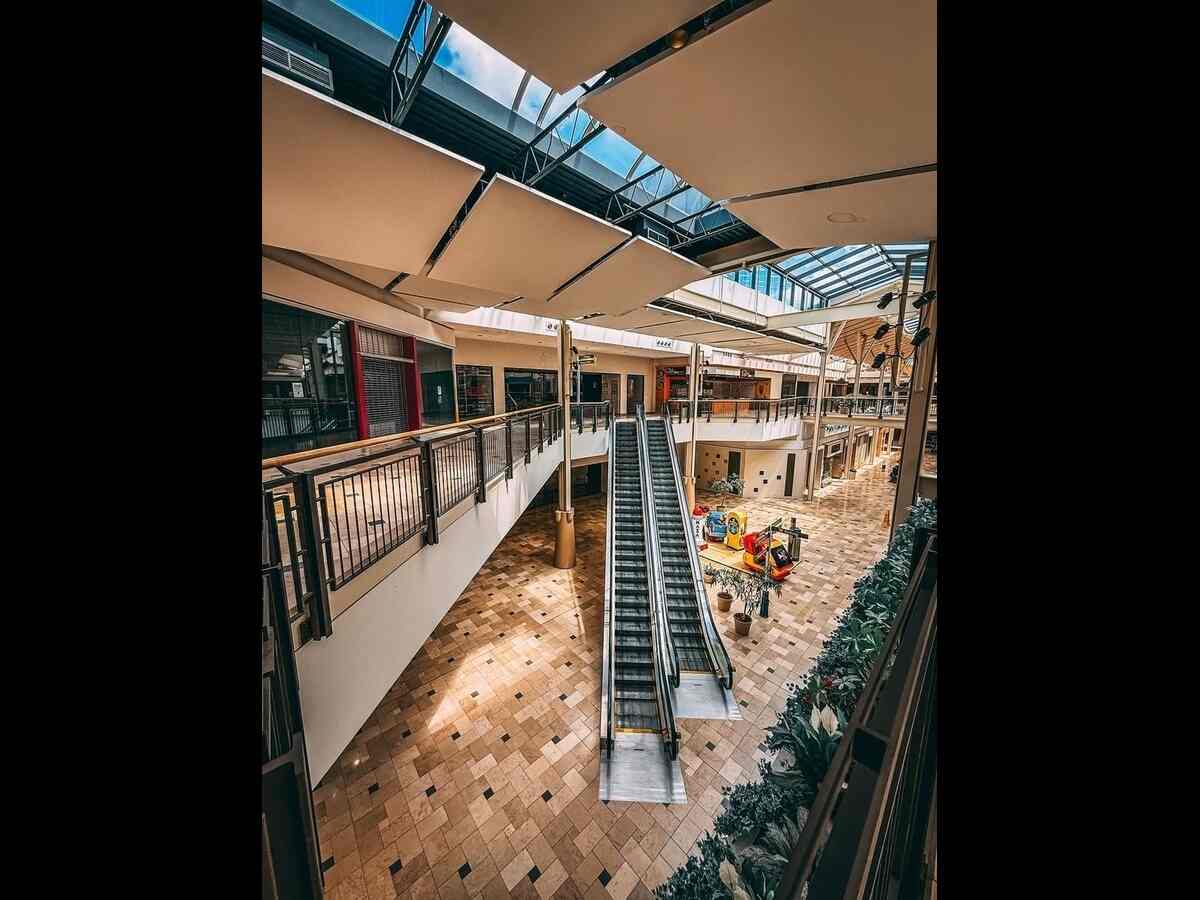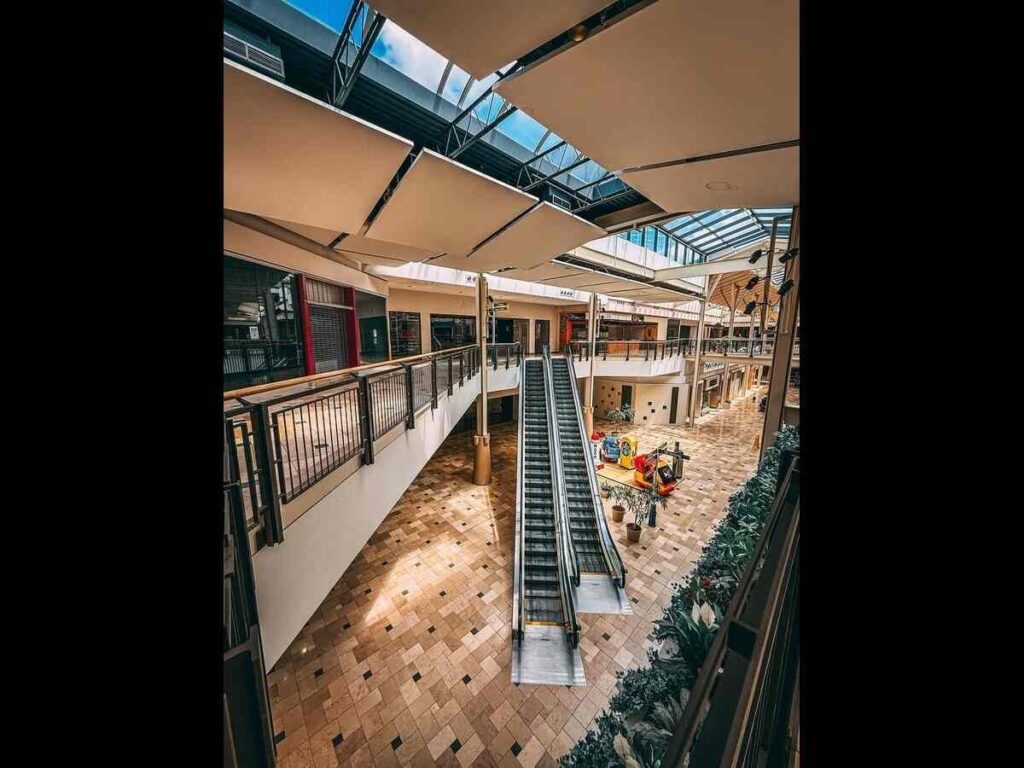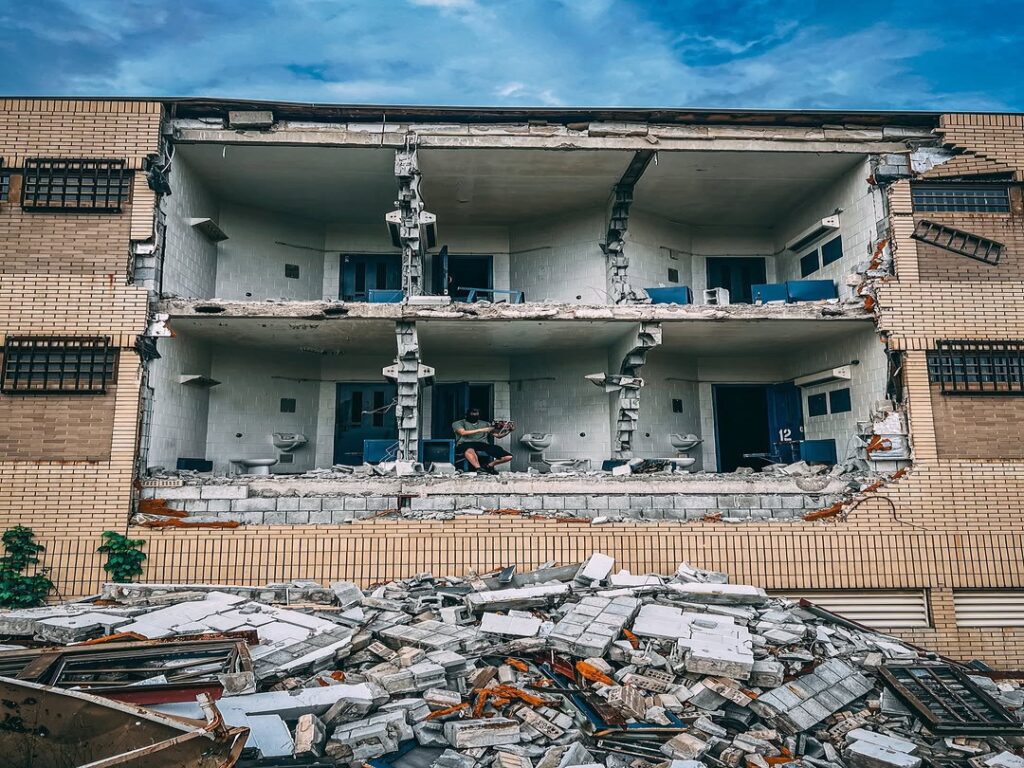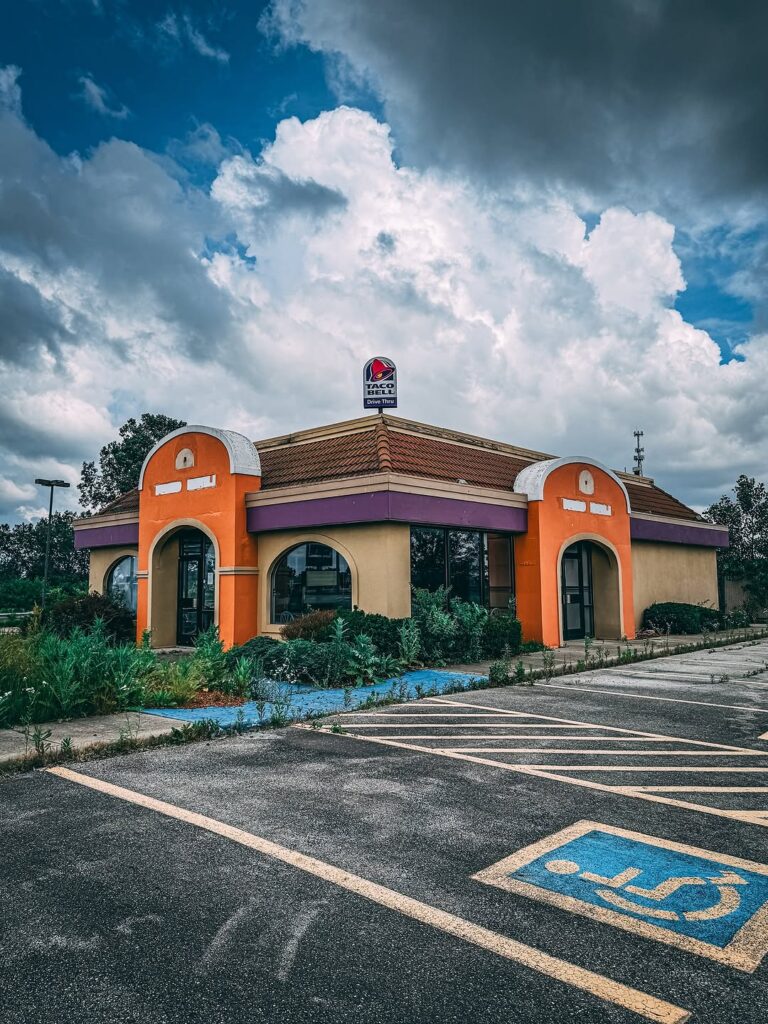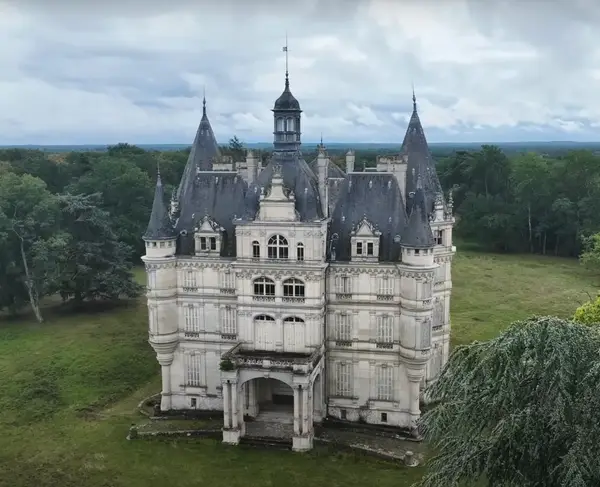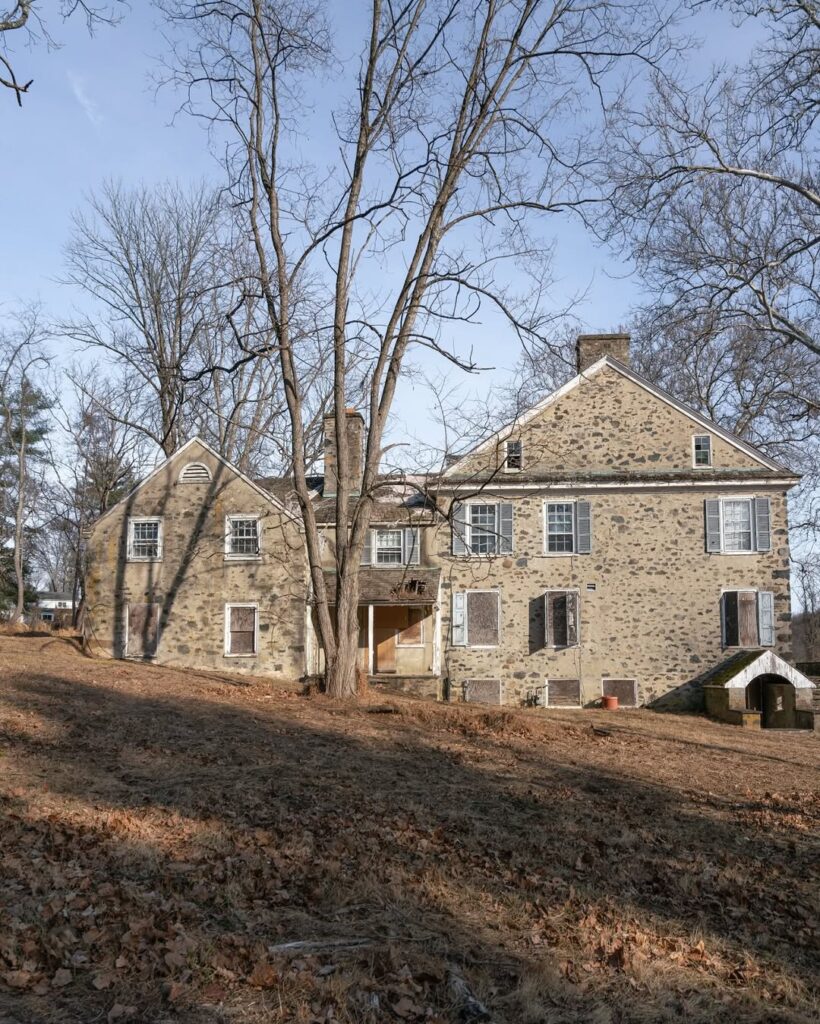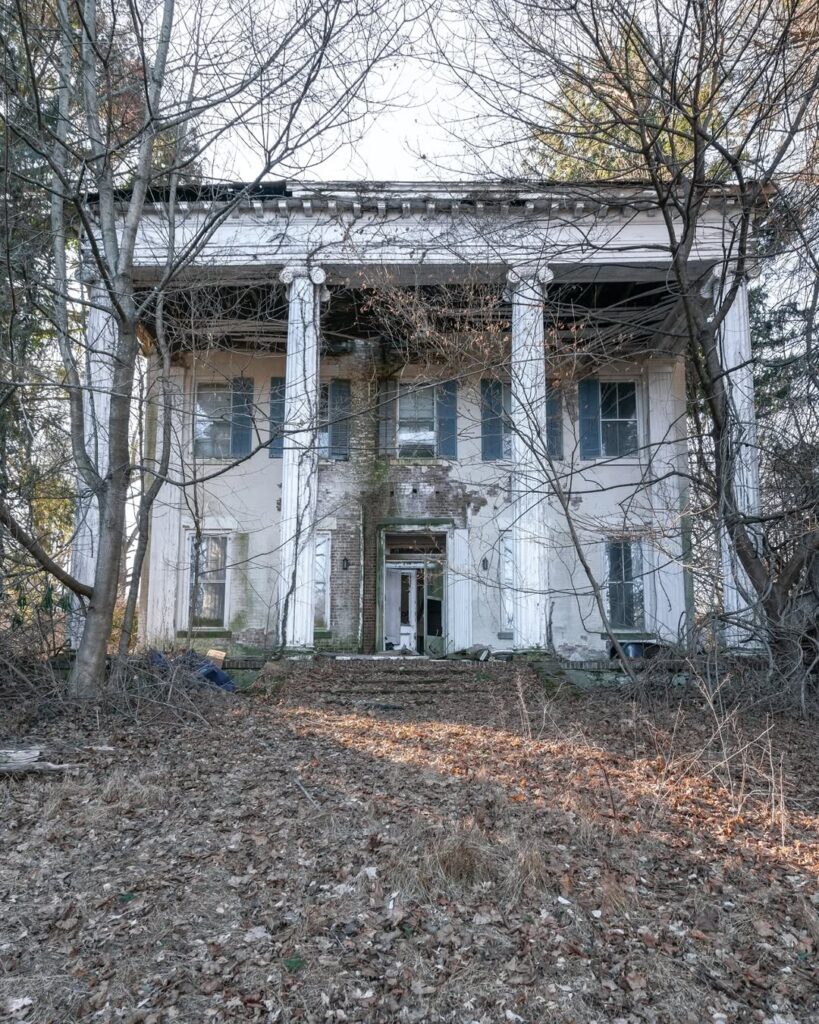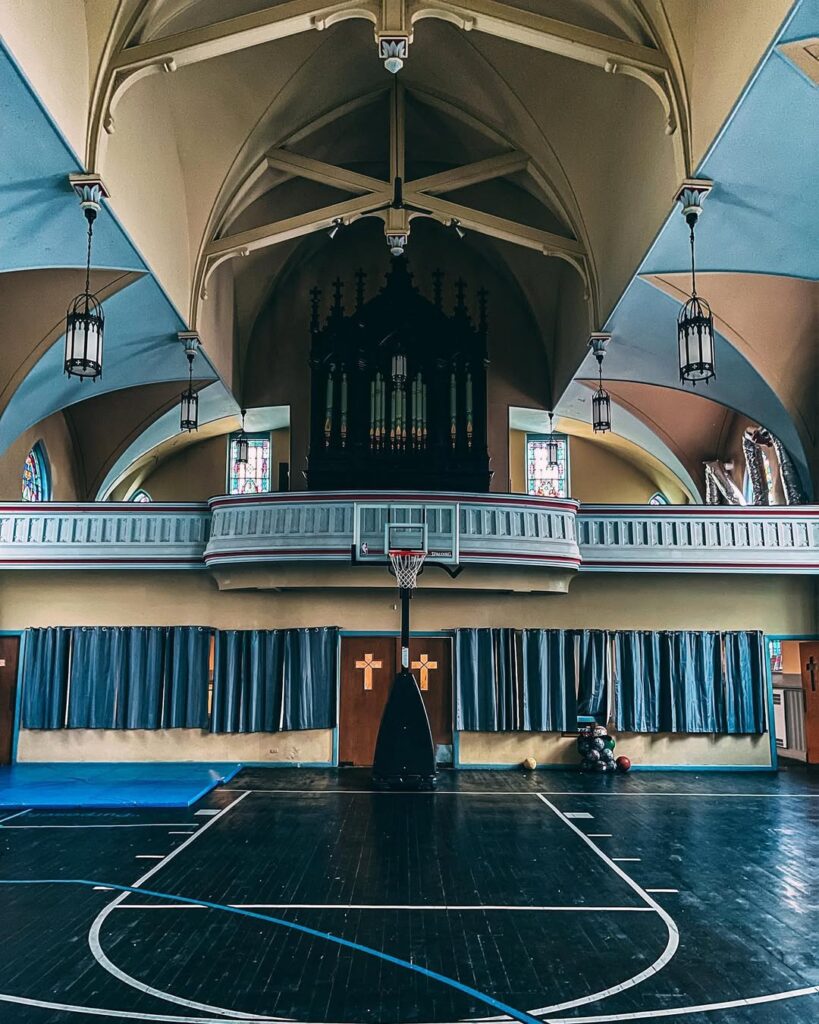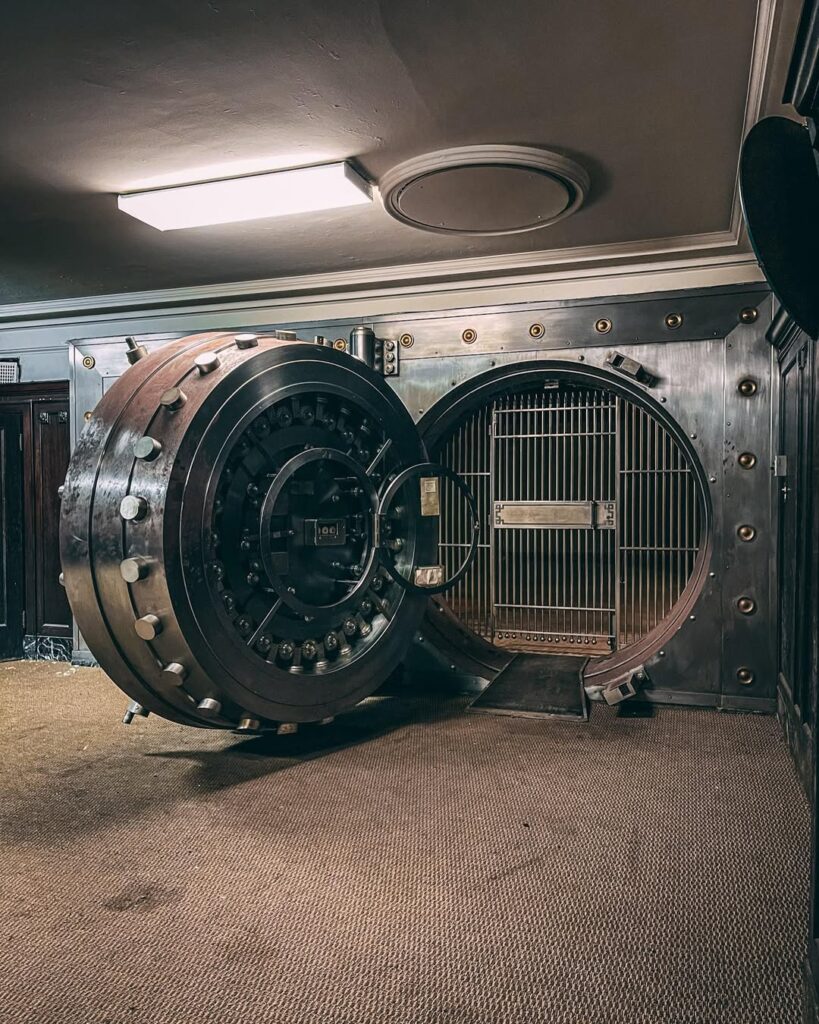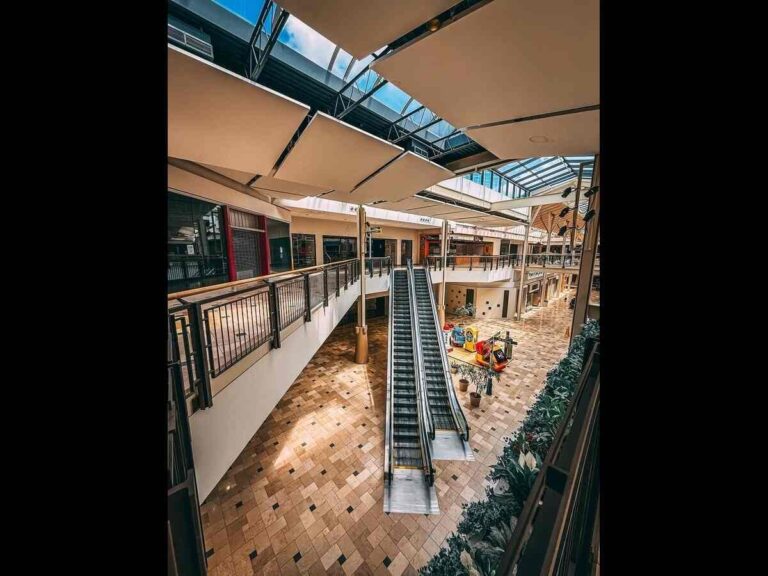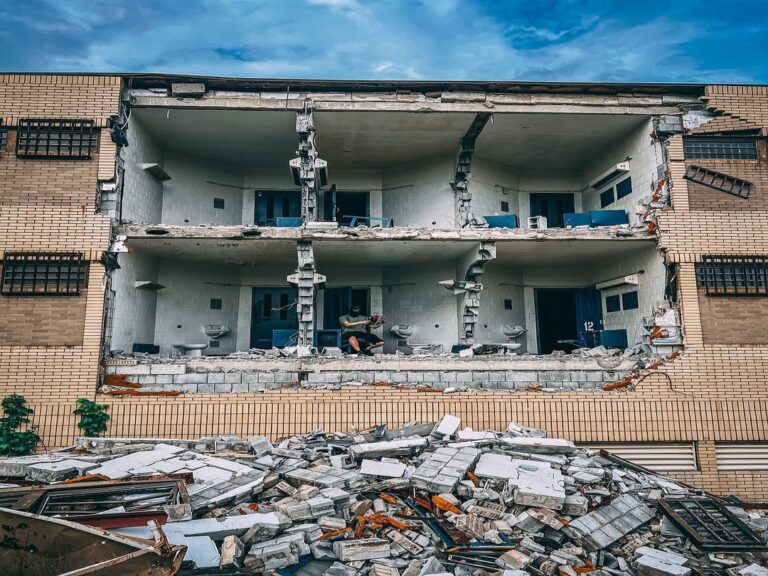Exton Square Mall in Pennsylvania stands as a haunting reminder of America’s retail apocalypse, transforming from a bustling shopping destination into what many consider a classic “dead mall.” Located in Chester County, this once-thriving retail center now serves as a case study in the dramatic changes that have reshaped American shopping habits and suburban landscapes over the past two decades.
The story of Exton Square Mall reflects broader trends affecting shopping centers across the United States, where changing consumer preferences, online shopping growth, and economic shifts have left countless malls struggling to survive. What makes Exton Square particularly noteworthy is how quickly it transitioned from a popular regional destination to a largely empty shell, with security guards now reportedly discouraging photography of its deteriorating conditions.
The mall’s current state raises important questions about retail real estate, community development, and the future of traditional shopping centers in suburban America. Dead plants, leaking roofs, peeling paint, and rows of empty storefronts tell a story that extends far beyond a single shopping center, representing the challenges facing retail properties nationwide as they grapple with fundamental shifts in how Americans shop and socialize.
H1: The History and Development of Exton Square Mall Pennsylvania
H2: Exton Square Mall’s Grand Opening and Early Success
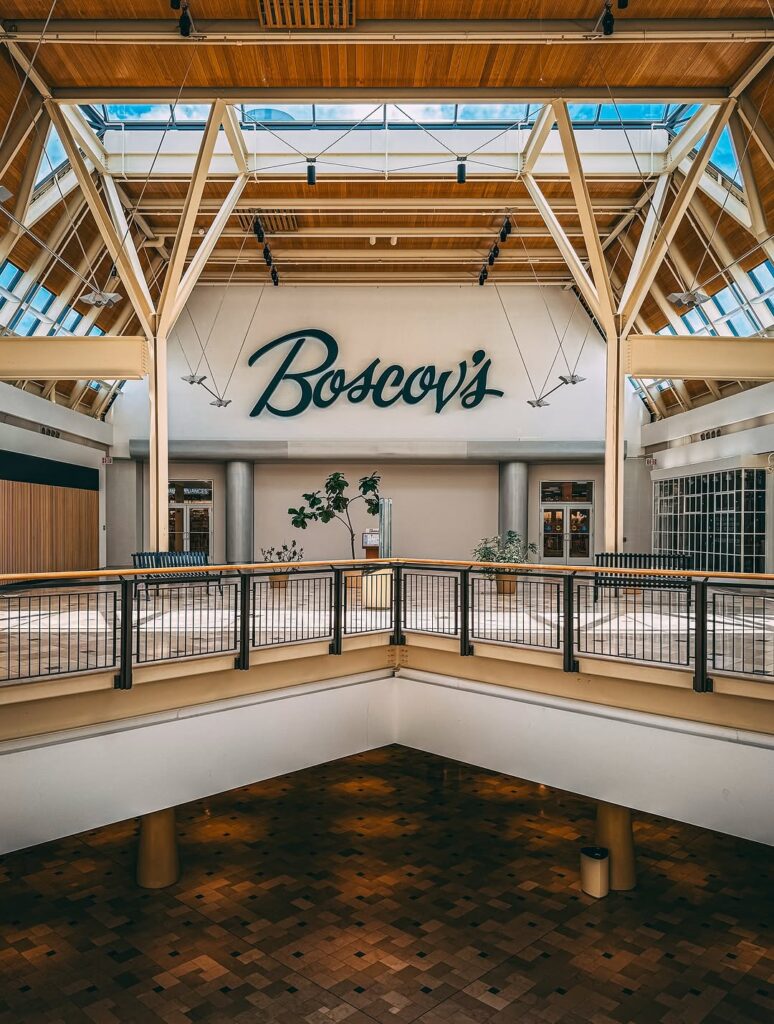
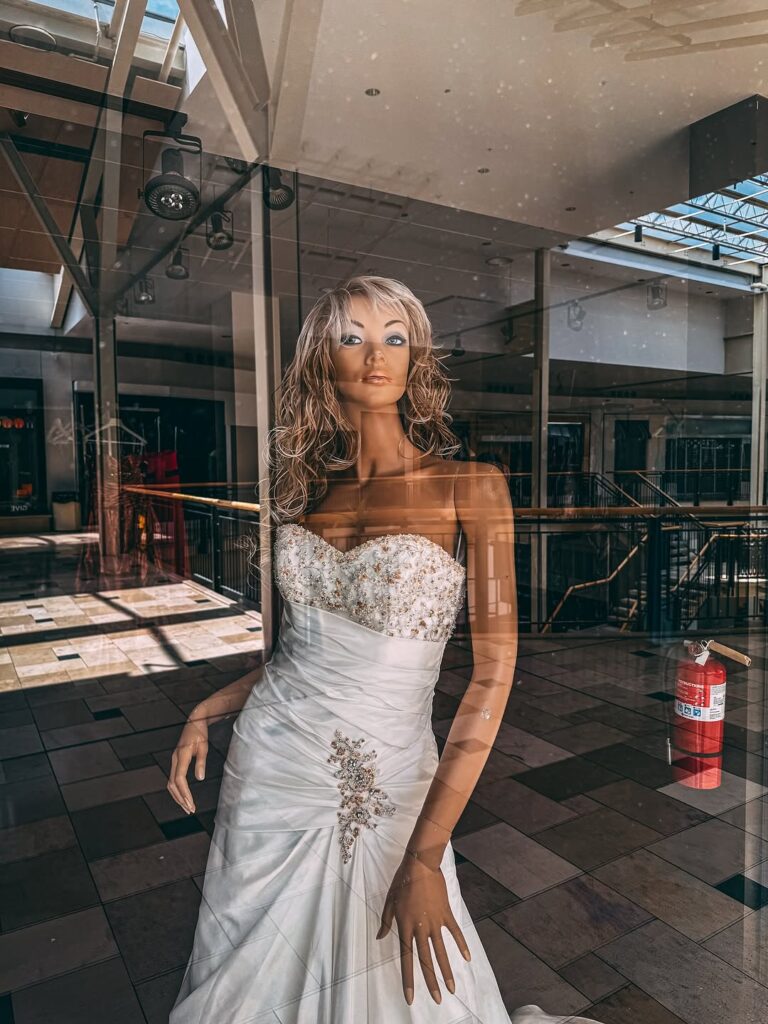
Exton Square Mall opened its doors in 1973, strategically positioned in Chester County’s growing suburban landscape. The mall was designed to serve the expanding communities of Exton, West Chester, and surrounding areas, capitalizing on the post-war suburban boom that drove families from urban centers to newly developed residential neighborhoods throughout southeastern Pennsylvania.
During its early decades, Exton Square Mall thrived as a regional shopping destination, anchored by major department stores that drew customers from across Chester County and beyond. The mall featured a typical enclosed design popular in the 1970s, with a central corridor connecting anchor stores and dozens of smaller retail spaces housing everything from clothing boutiques to electronics stores, restaurants, and specialty shops.
The mall’s success during the 1980s and 1990s reflected the broader prosperity of Chester County, one of Pennsylvania’s wealthiest regions. Families made weekend trips to Exton Square Mall not just for shopping, but as a social activity, with teenagers hanging out in the food court and families strolling through climate-controlled corridors regardless of weather conditions outside.
H2: Peak Years and Major Retailers at Exton Square Mall
Throughout the 1980s and 1990s, Exton Square Mall hosted an impressive roster of national retailers that made it a true regional destination. Major department stores served as anchor tenants, while the mall’s interior corridors bustled with popular chain stores, specialty retailers, and dining options that catered to diverse shopping needs and preferences.
The mall’s food court became a popular gathering place, featuring a variety of dining options from fast food chains to local restaurants. Entertainment options included a movie theater and arcade, making Exton Square Mall a comprehensive destination for families seeking a full day of shopping, dining, and entertainment under one roof.
During these peak years, the mall regularly hosted community events, seasonal celebrations, and promotional activities that strengthened its role as a community hub. Holiday decorations, back-to-school fashion shows, and special appearances by celebrities or cartoon characters drew crowds and created lasting memories for generations of Chester County families.
H1: The Decline of Exton Square Mall – Dead Mall Transformation
H2: Economic Factors Contributing to Exton Square Mall’s Decline
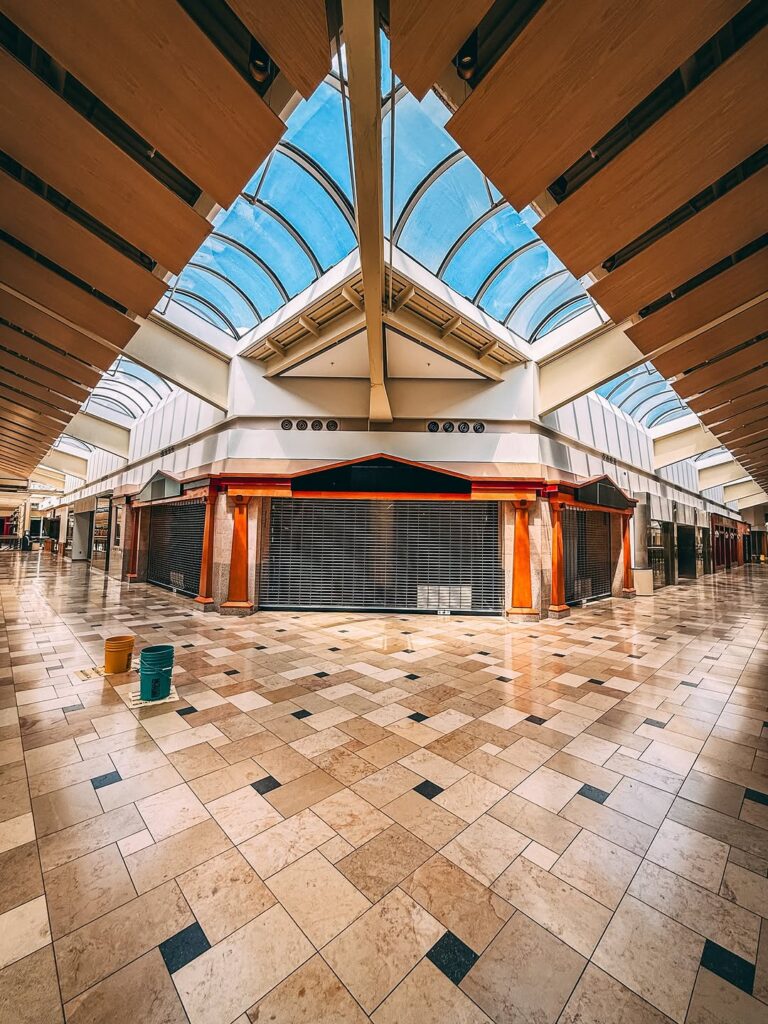
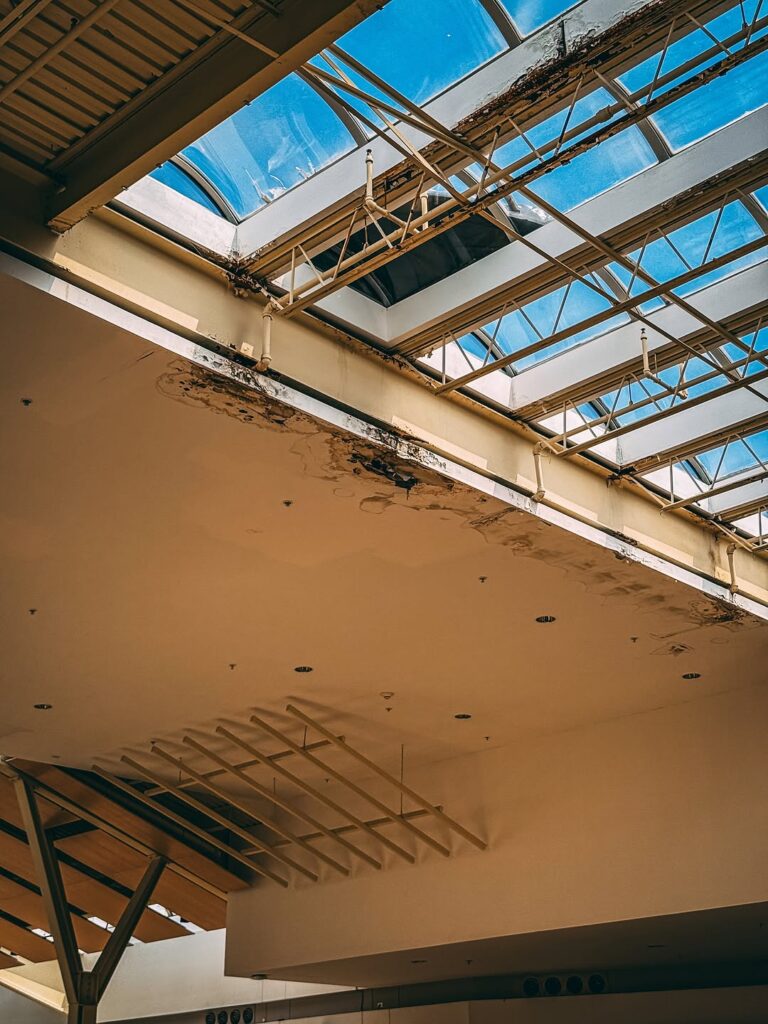
The transformation of Exton Square Mall into a dead mall didn’t happen overnight but resulted from multiple economic factors that began affecting shopping centers nationwide in the early 2000s. The rise of online shopping fundamentally changed consumer behavior, with customers increasingly preferring the convenience of purchasing goods from home rather than making trips to physical retail locations.
Competition from newer shopping developments also played a significant role in Exton Square Mall’s decline. The King of Prussia Mall, located about 20 miles away, expanded significantly and attracted many of the high-end retailers that had previously considered Exton Square Mall their primary Chester County location. Additionally, outdoor lifestyle centers and strip malls offered more convenient parking and easier access to individual stores.
Economic downturns, particularly the 2008 recession, accelerated the mall’s decline as retailers consolidated locations and consumers reduced discretionary spending. Many national chains that had operated successfully at Exton Square Mall for decades chose not to renew leases, leaving behind empty storefronts that proved difficult to fill with replacement tenants.
H2: Anchor Store Departures and Tenant Exodus
The departure of anchor stores marked the beginning of Exton Square Mall’s transformation into a dead mall. When major department stores closed their Exton locations, they took with them not only significant foot traffic but also the anchor tenant rental income that helped subsidize smaller retailers throughout the mall.
As anchor stores left, smaller retailers found it increasingly difficult to justify their lease costs without the customer traffic that major department stores had historically generated. This created a cascading effect where each store closure made it harder for remaining tenants to attract customers, leading to additional departures and creating an increasingly empty and unwelcoming shopping environment.
The loss of the movie theater and other entertainment options further reduced reasons for families to visit Exton Square Mall. Without these anchor attractions, the mall struggled to maintain its role as a community gathering place, and visitor numbers continued to decline as the overall shopping experience deteriorated.
H1: Current Conditions at Exton Square Mall Dead Mall
H2: Physical Deterioration and Maintenance Issues
Visitors to Exton Square Mall today encounter clear signs of the physical deterioration that characterizes many dead malls across America. Reports describe dead plants throughout common areas, evidence of poor maintenance and reduced investment in the property’s appearance. Leaking roofs have created water damage in various sections of the mall, while peeling paint on walls and fixtures reflects years of deferred maintenance.
The mall’s lighting systems have been reduced in many areas, creating dimly lit corridors that feel unwelcoming compared to the bright, inviting atmosphere that once characterized successful shopping centers. Broken tiles, worn carpeting, and damaged fixtures throughout the property contribute to an overall sense of decline and abandonment.
Empty storefronts with security gates or temporary barriers create a stark contrast to the bustling retail environment that once filled these spaces. Many former store locations remain vacant with “For Lease” signs that have been posted for months or years, indicating the difficulty property managers face in attracting new tenants to the struggling facility.
H2: Security Concerns and Photography Restrictions
Recent reports suggest that security personnel at Exton Square Mall have become increasingly strict about photography within the facility, allegedly citing security concerns about images showing the mall’s deteriorated condition. This policy appears to reflect property management concerns about negative publicity and the potential impact of “dead mall” documentation on remaining tenants and future leasing prospects.
The restriction on photography highlights the sensitive nature of documenting retail decline, as property owners balance transparency with business interests. However, these policies often generate more attention and curiosity about a mall’s condition than they prevent, as restrictions on documentation can become news stories themselves.
Security presence at dead malls like Exton Square serves multiple purposes beyond preventing photography, including deterring vandalism, managing homeless populations, and maintaining basic safety for remaining tenants and their customers. However, the need for heightened security measures also reflects the challenges facing struggling retail properties.
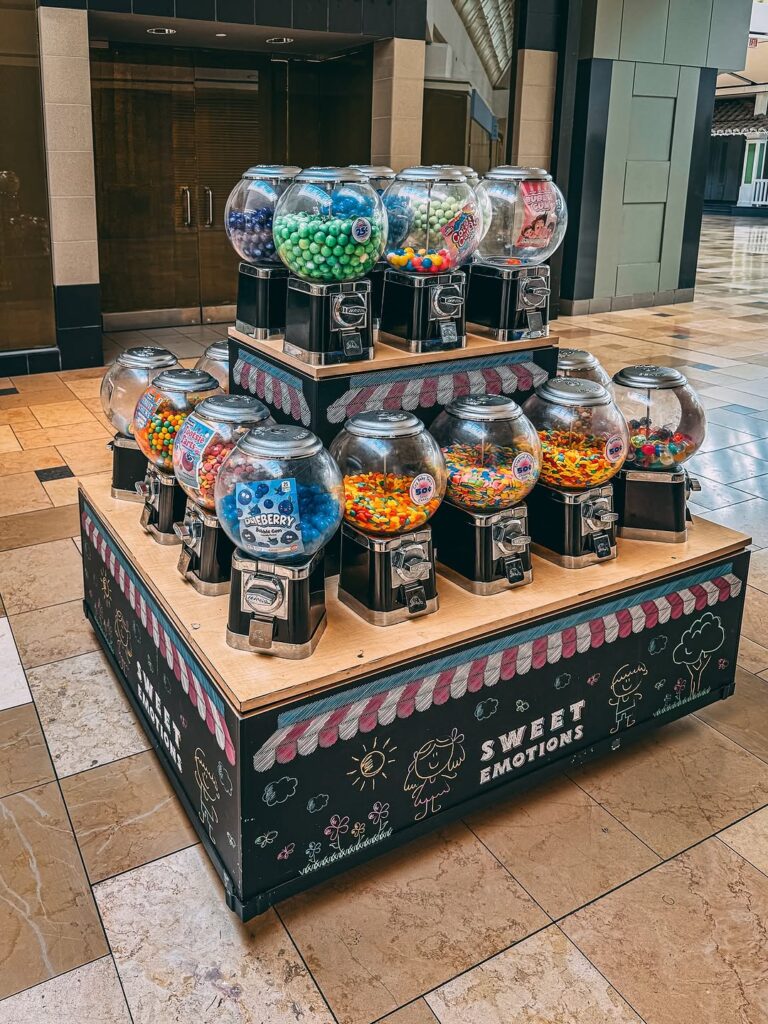
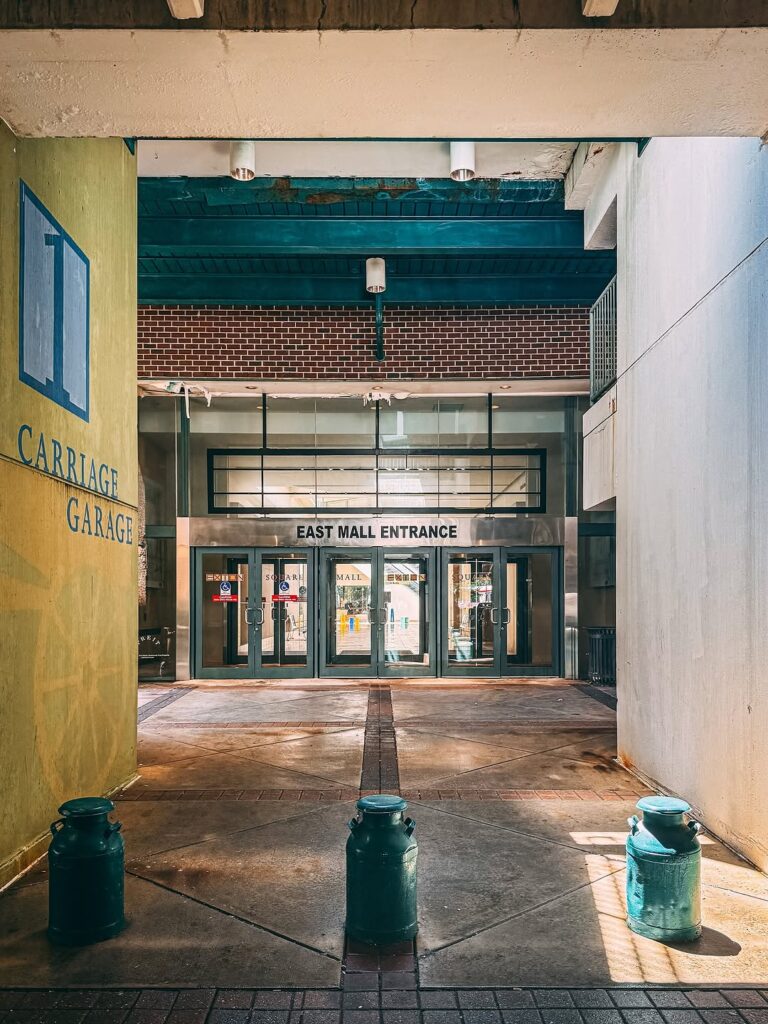
H1: Dead Mall Culture and Urban Exploration at Exton Square
H2: The Dead Mall Photography Movement
Exton Square Mall has attracted attention from photographers and urban explorers interested in documenting America’s retail decline. The “dead mall” photography movement seeks to preserve visual records of these changing landscapes while exploring themes of economic transition, suburban development, and consumer culture evolution.
Dead mall photography serves both artistic and historical purposes, creating visual documentation of architectural spaces and social environments that are rapidly disappearing from American landscapes. These images often reveal the contrast between original design intentions and current reality, highlighting how quickly retail spaces can transform when economic conditions change.
The artistic appeal of dead mall photography lies partly in the surreal quality of these spaces – designed for crowds and activity but now largely empty and quiet. The interplay of natural and artificial lighting, the geometric patterns of empty storefronts, and the architectural details of 1970s mall design create compelling subjects for photographers interested in urban decay and social commentary.
H2: Social Media Documentation and Viral Content
Despite photography restrictions, images and videos of Exton Square Mall’s current condition continue to circulate on social media platforms, often gaining viral attention as examples of retail apocalypse documentation. These posts frequently generate discussions about economic change, suburban development, and nostalgia for earlier eras of American retail culture.
Social media documentation of dead malls like Exton Square serves as informal historical record-keeping, preserving visual evidence of spaces that may eventually be demolished or completely renovated. Comments on these posts often include memories from former visitors, creating digital archives of personal experiences and community history.
The viral nature of dead mall content reflects broader public fascination with decline narratives and liminal spaces. Exton Square Mall’s transformation resonates with viewers who recognize similar changes in their own communities, making these local stories representative of national trends affecting American retail and suburban development.
H1: Economic Impact of Exton Square Mall’s Decline
H2: Property Values and Community Effects
The decline of Exton Square Mall has had significant impacts on surrounding property values and community development patterns in Chester County. Dead malls often negatively affect nearby residential and commercial properties, as the large, underutilized retail space can become an eyesore that discourages investment and development in surrounding areas.
Local tax revenue has also been affected by the mall’s declining assessed value and reduced retail activity. Shopping centers traditionally generate significant tax revenue through both property taxes and local sales taxes, so the transformation of a thriving mall into a mostly empty facility represents a substantial loss of municipal income.
However, some argue that dead malls like Exton Square also create opportunities for creative redevelopment projects that could better serve evolving community needs. The large, enclosed spaces and existing infrastructure might be adapted for alternative uses including mixed-use development, community centers, or specialized facilities that weren’t feasible when the properties were fully occupied retail centers.
H2: Employment Loss and Business Impact
The transformation of Exton Square Mall into a dead mall has resulted in significant job losses as retailers closed their locations and reduced their local workforce. These positions ranged from entry-level retail jobs often filled by teenagers and young adults to management positions that provided career opportunities for experienced retail professionals.
The ripple effects of employment loss extend beyond the mall itself, affecting local businesses that relied on mall employees and shoppers for their customer base. Restaurants, gas stations, and service businesses near the mall have experienced reduced traffic as fewer people make trips to the area for shopping and entertainment.
Small business owners who operated stores within Exton Square Mall faced particular challenges, as many had invested significantly in fixtures, inventory, and lease agreements that became worthless when foot traffic declined. Unlike national chains that could absorb losses from underperforming locations, local entrepreneurs often faced financial hardship when their mall-based businesses became unsustainable.
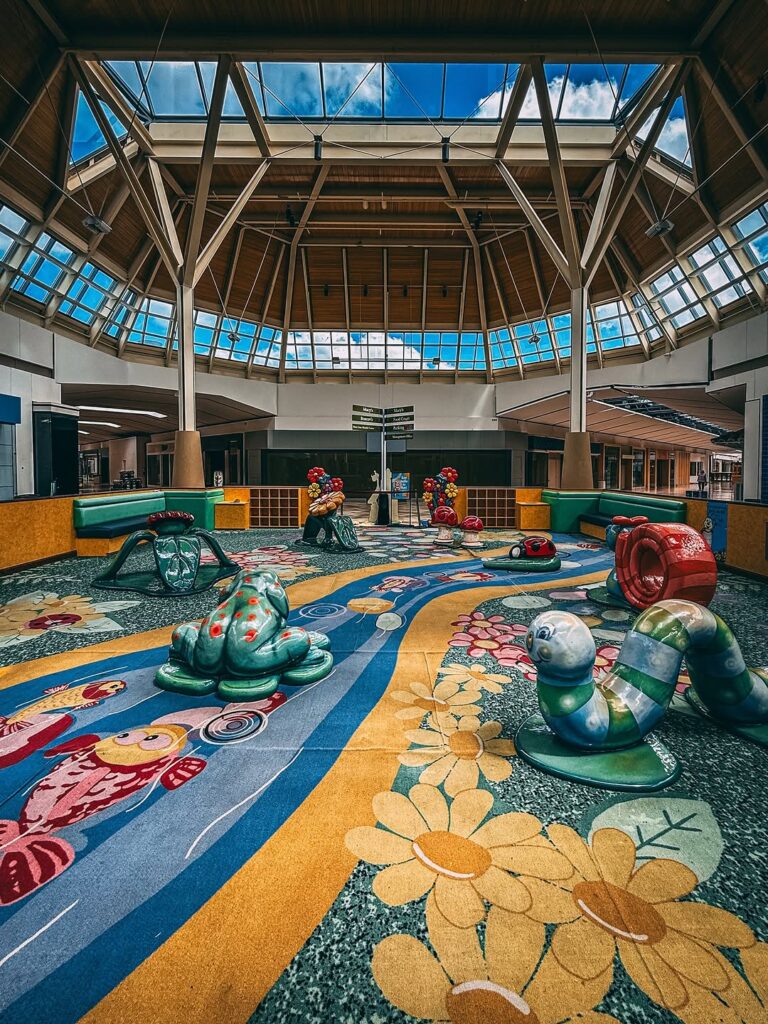
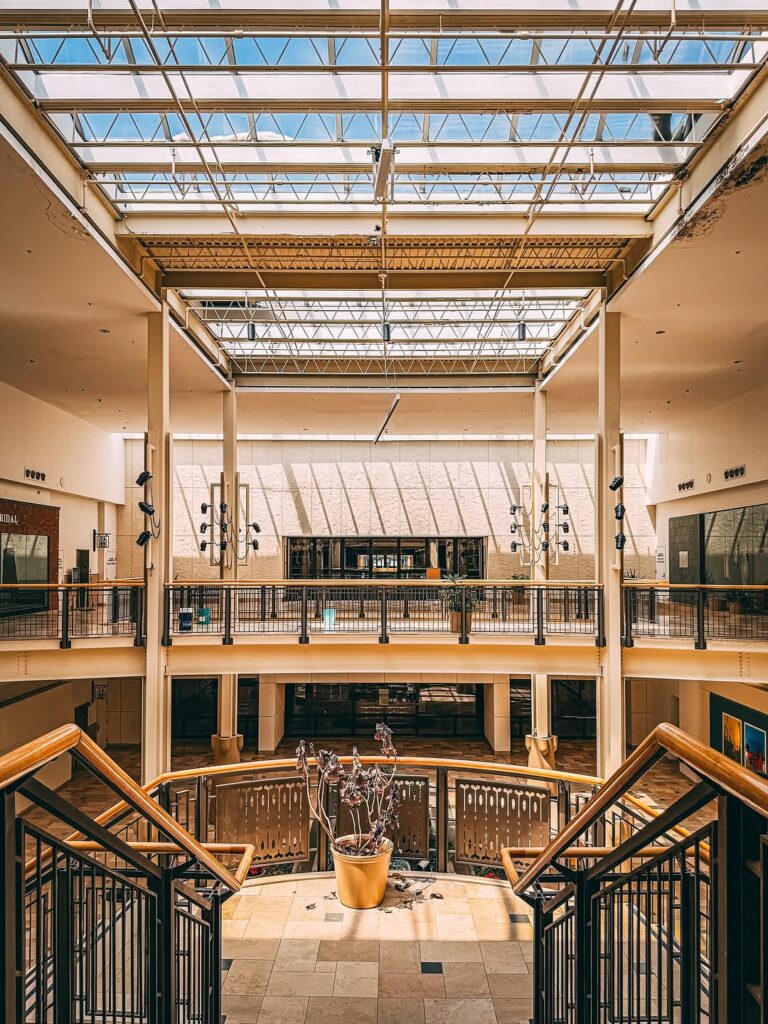
H1: Redevelopment Plans and Future of Exton Square Mall
H2: Proposed Redevelopment Projects and Mixed-Use Development
Various redevelopment proposals have been discussed for Exton Square Mall, reflecting growing recognition that traditional enclosed shopping centers may not be viable in their original format. Mixed-use development concepts could transform the large retail space into a combination of residential units, office space, entertainment venues, and smaller-scale retail that better matches current market demands.
Successful dead mall redevelopment projects in other communities have demonstrated the potential for creative adaptive reuse of these large, centrally located properties. Examples include conversion to medical facilities, educational institutions, community centers, and mixed-use developments that create more diverse and sustainable economic activity than traditional retail-focused malls.
However, redevelopment of dead malls faces significant challenges including the substantial costs of renovation or demolition, environmental concerns related to large retail structures, and the need for local government support and community buy-in for zoning changes and infrastructure modifications.
H2: Challenges in Mall Redevelopment and Adaptive Reuse
Redeveloping dead malls like Exton Square presents unique technical and financial challenges that make these projects more complex than typical real estate development. The large, open interior spaces were designed specifically for retail use and may require extensive modification to accommodate alternative uses such as residential or office space.
Infrastructure challenges include updating electrical, plumbing, and HVAC systems that were designed for retail operations rather than other types of occupancy. The parking areas, while extensive, may not be appropriately configured for mixed-use development, potentially requiring significant reconfiguration and additional investment.
Financial challenges include the high costs of renovation relative to the potential return on investment, particularly in markets where real estate values haven’t kept pace with redevelopment costs. Developers must also navigate complex ownership structures, existing tenant leases, and local zoning requirements that may not easily accommodate non-retail uses.
H1: Dead Mall Tourism and Cultural Significance
H2: Exton Square Mall as Cultural Artifact
Exton Square Mall represents more than just a failed retail venture – it serves as a cultural artifact that documents changing American lifestyles, consumer preferences, and suburban development patterns. The mall’s transformation from community hub to dead mall reflects broader social changes that have reshaped how Americans shop, socialize, and interact with their built environment.
The cultural significance of dead malls extends to their role in American coming-of-age narratives, as many adults have memories of teenage years spent at shopping centers like Exton Square Mall. These spaces served as important social environments where young people could gather independently from adult supervision, making them significant locations in personal and generational memory.
Academic researchers study dead malls like Exton Square as examples of how quickly built environments can lose their social and economic functions when underlying conditions change. These studies contribute to understanding of retail geography, suburban planning, and the lifecycle of commercial real estate development.
H2: Nostalgia and Memory in Dead Mall Narratives
The emotional response many people have to dead malls like Exton Square Mall reflects deep connections between memory and place that extend beyond simple nostalgia. For many visitors, these spaces represent lost community gathering places and social environments that haven’t been fully replaced by online shopping or other retail formats.
Memory narratives surrounding dead malls often focus on specific experiences – first jobs in retail stores, teenage social gatherings, family shopping trips, and holiday traditions. These personal stories become part of the broader cultural narrative about economic change and social transformation in American communities.
The preservation of these memories through photography, social media posts, and informal documentation efforts demonstrates the ongoing cultural significance of dead malls even after their economic function has largely ended. These spaces continue to generate meaning and emotional response long after their original purpose has been abandoned.
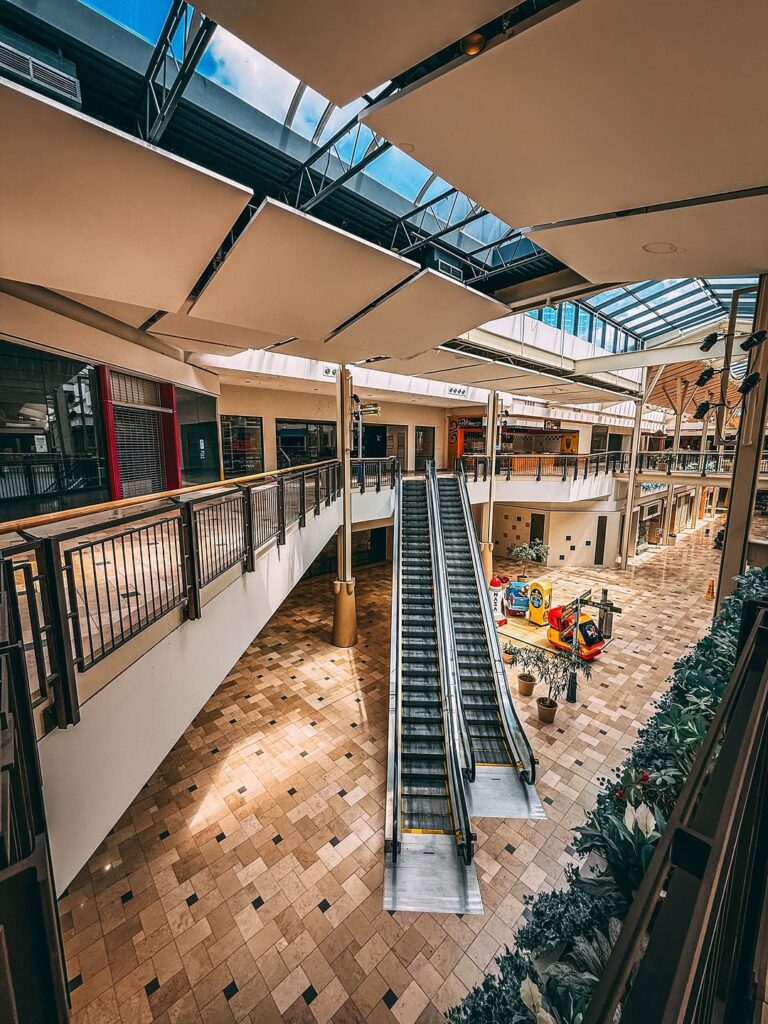
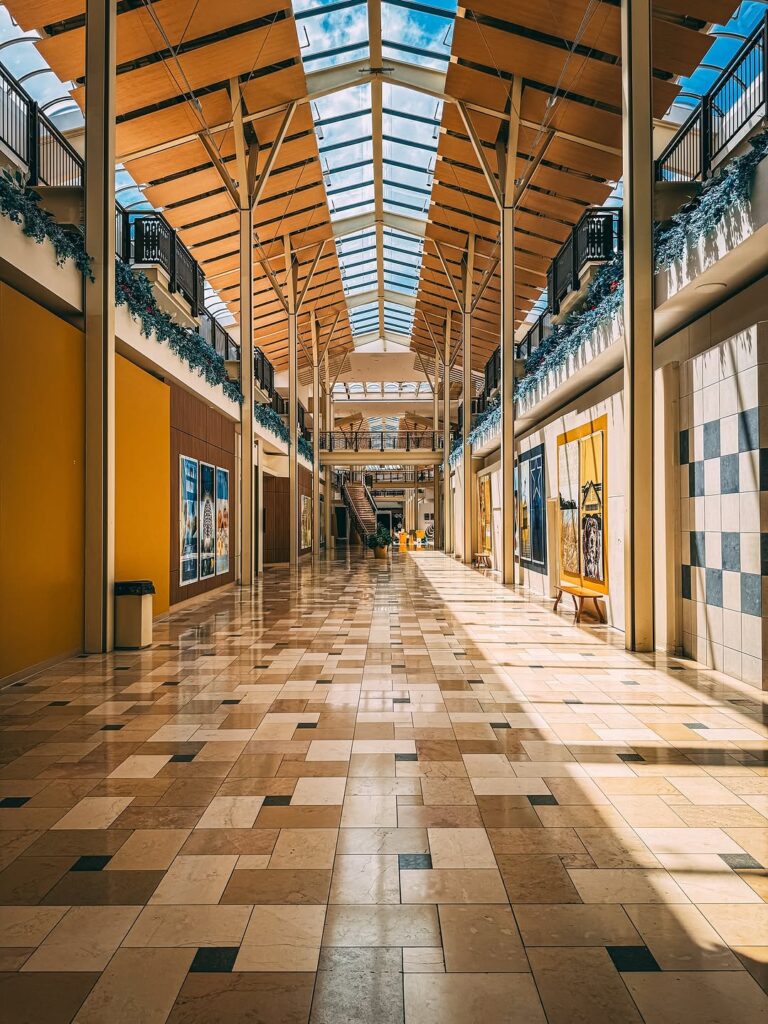
H1: Chester County Retail Landscape and Mall Competition
H2: Alternative Shopping Destinations Near Exton Square Mall
The decline of Exton Square Mall coincided with the development of alternative shopping destinations that better matched evolving consumer preferences. Outdoor lifestyle centers and strip malls offered easier parking, more convenient access to individual stores, and a shopping experience that many customers preferred to enclosed mall environments.
King of Prussia Mall, located about 20 miles from Exton, significantly expanded during the period when Exton Square Mall was declining, attracting many high-end retailers and serving as the premier regional shopping destination for Chester County residents willing to travel for premium shopping experiences.
The growth of online shopping also provided an alternative that eliminated many of the advantages traditional malls once offered, such as the ability to visit multiple stores in a single trip or protection from weather conditions. Customers could now comparison shop and access a wider variety of products without leaving their homes.
H2: Changing Consumer Preferences and Retail Trends
The transformation of Exton Square Mall into a dead mall reflects fundamental changes in consumer behavior that have affected retail properties nationwide. Modern shoppers increasingly value convenience, efficiency, and unique experiences over the comprehensive selection and social environment that traditional malls were designed to provide.
Demographic changes in shopping patterns show younger consumers preferring online shopping or experiential retail that offers entertainment, dining, and social activities integrated with shopping opportunities. Traditional enclosed malls like Exton Square Mall were less successful at adapting to these preferences than newer retail formats.
The rise of specialty retailers, boutique shopping experiences, and direct-to-consumer brands has also reduced demand for the mid-market chain stores that historically anchored successful shopping malls. These trends have made it increasingly difficult for traditional malls to maintain the tenant mix necessary for sustained success.
Frequently Asked Questions (FAQs)
What is the current status of Exton Square Mall in Pennsylvania?
Exton Square Mall is currently considered a “dead mall” with most of its retail spaces vacant and showing signs of physical deterioration including dead plants, leaking roofs, and peeling paint. The mall remains partially open with limited tenants, but security reportedly restricts photography of the facility’s declining conditions.
When did Exton Square Mall open and when did it start declining?
Exton Square Mall opened in 1973 and enjoyed success through the 1980s and 1990s. Its decline began in the early 2000s due to online shopping competition, anchor store departures, and the development of alternative shopping destinations. The transformation into a dead mall accelerated significantly after the 2008 recession.
Why are dead malls like Exton Square Mall becoming more common?
Dead malls are becoming more common due to changing consumer preferences, online shopping growth, competition from outdoor lifestyle centers, economic downturns, and anchor store closures. Traditional enclosed malls struggle to adapt to modern retail trends that favor convenience, experiences, and specialized shopping environments.
Can you still shop at Exton Square Mall?
While Exton Square Mall remains partially open, shopping options are extremely limited compared to its peak years. Most retail spaces are vacant, and the few remaining tenants operate in a largely empty facility with deteriorating conditions and reduced foot traffic.
What happens to dead malls like Exton Square Mall?
Dead malls face various futures including demolition, redevelopment into mixed-use properties, conversion to alternative uses like medical facilities or community centers, or continued deterioration until eventual abandonment. Success depends on location, ownership, local government support, and market conditions.
Why do security guards restrict photography at Exton Square Mall?
Security restrictions on photography reportedly relate to concerns about negative publicity showing the mall’s deteriorated condition, including dead plants, leaking roofs, and empty stores. Property management may worry that such images could discourage remaining tenants or potential new lessees.
What was Exton Square Mall like during its successful years?
During its peak years, Exton Square Mall was a thriving regional shopping destination with major department store anchors, dozens of specialty retailers, a busy food court, movie theater, and arcade. It served as a community gathering place for families and teenagers throughout Chester County.
Are there plans to redevelop Exton Square Mall?
Various redevelopment concepts have been discussed for Exton Square Mall, including mixed-use development combining residential, office, and retail space. However, redevelopment faces significant challenges including renovation costs, infrastructure updates, and the need for zoning changes and community support.
How has Exton Square Mall’s decline affected the local community?
The mall’s decline has negatively impacted local property values, reduced tax revenue, eliminated jobs, and affected nearby businesses that relied on mall traffic. However, it has also created potential opportunities for alternative development that might better serve current community needs.
What makes Exton Square Mall significant in dead mall culture?
Exton Square Mall represents a typical example of American retail decline, attracting attention from photographers and urban explorers documenting dead mall culture. Its transformation from thriving community hub to largely empty facility illustrates broader trends affecting suburban retail development nationwide.
Can you visit Exton Square Mall as a tourist interested in dead malls?
While the mall remains partially open to the public, visitors should be aware of photography restrictions and limited shopping options. The facility primarily serves as an example of retail decline rather than a traditional tourist destination, though it may interest those studying American retail history and suburban development.
How does Exton Square Mall compare to other dead malls in Pennsylvania?
Exton Square Mall is one of many Pennsylvania shopping centers affected by retail decline, though each has unique circumstances. Some dead malls have been successfully redeveloped while others have been demolished. Exton Square’s situation reflects common challenges facing mid-tier regional malls throughout the state.
Conclusion
Exton Square Mall’s transformation from a bustling community hub to a largely empty dead mall tells a story that extends far beyond Chester County, Pennsylvania. This retail decline represents broader changes in American consumer behavior, suburban development patterns, and the evolution of shopping preferences that have affected communities nationwide.
The mall’s current condition – with dead plants, leaking roofs, peeling paint, and rows of empty storefronts – serves as a physical manifestation of economic and social changes that have reshaped how Americans shop and socialize. The reported restrictions on photography highlight the sensitive nature of documenting retail decline and the complex challenges facing property owners trying to manage struggling retail assets.
Yet Exton Square Mall’s story isn’t necessarily over. Like many dead malls across America, it represents both the end of one era and the potential beginning of another. Creative redevelopment projects, adaptive reuse initiatives, and changing community needs could potentially transform this space into something that better serves the evolving requirements of Chester County residents.
The cultural significance of dead malls like Exton Square extends beyond their economic function to their role in American memory and social experience. These spaces once served as important community gathering places, and their decline represents the loss of shared social environments that haven’t been fully replaced by online shopping or alternative retail formats.
As communities across America grapple with similar retail challenges, Exton Square Mall serves as both a cautionary tale and a case study in the need for adaptive approaches to suburban development. Whether through redevelopment, repurposing, or demolition, the future of this dead mall will likely reflect broader decisions about how American communities want to balance nostalgia with pragmatic responses to changing economic and social conditions.
The story of Exton Square Mall reminds us that built environments are never permanent, and that the spaces we create must evolve with changing human needs and economic conditions. In documenting and understanding these changes, we better prepare for the ongoing transformation of American retail landscapes and suburban communities.
![]()
Abandonedplace.com is your premier online destination for discovering and share the Top 50 abandoned places in the world. Our platform is dedicated to discovering the mystery, history and beauty of forgotten places through the Lenses of Urban Exploration

